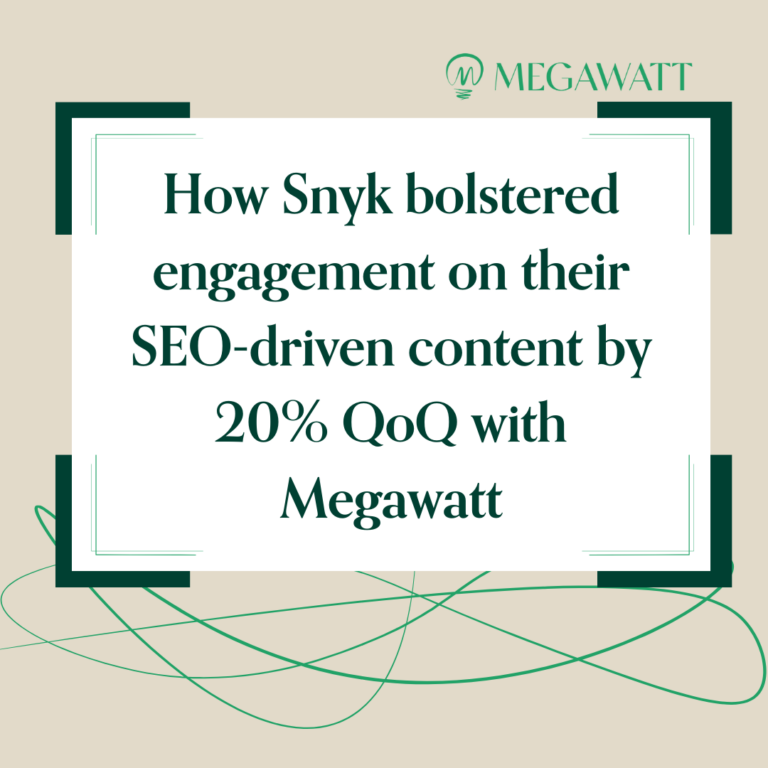Ethical Hacking and Cybersecurity 101
Ethical hacking and cybersecurity are deeply intertwined. Gartner predicts that, by 2025, 45% of organizations worldwide will have experienced a cyberattack. Add the fact IBM clocks in the global cost of a data breach at $4.35M, and even one successful breach can cause financial (and reputational) devastation. What does that mean for security pros? To beat the bad guys, they need to start thinking like them. Enter white hat – or ethical – hacking. But how are ethical hacking and cybersecurity related, and why do security teams do it? Turns out, it’s not so they can feel cool while putting Billie Eilish’s “Bad Guy” on full blast. To get the Megawatt 101 on ethical hacking and cybersecurity, let’s start by dispelling some common myths. As a bonus, we’ve put together this fun deck to walk you through the content, just in case that’s more your jam! Check it out below, or read on for the full story:
What is Ethical Hacking?
Here’s what ethical hacking actually entails: It’s the authorized process of bypassing an organization’s defense programs to test its security infrastructure. This proactive method of cybersecurity helps identify vulnerabilities in systems and boost defense against potential breaches, risks, and threats. Now, what does that mean in regular English? It’s basically letting a security pro try to hack your systems on purpose so you can figure out where you’re most vulnerable. Keep in mind ethical hacking is not:
- An unsolicited hacker breaching systems without permission “for the greater good”
- An experimental method of enhancing cybersecurity programs (today’s approach can be traced to the 1970s)
- An excuse to wear a dark hoodie before Labor Day
In the modern threat landscape, ethical hacking is also not just an “add-on” or “nice to have” for cyber defense programs. It’s an absolute necessity for organizations hoping to keep their systems safe from today’s bad actors.
Why Do We Ethically Hack?
Ethical hacking might seem like a weird way of boosting cybersecurity. But the essence of ethical hacking ties back to a tried-and-true mantra for any learning experience: You learn the most when you make mistakes. That’s exactly what ethical hackers do: They help organizations learn from their mistakes. By identifying where their security program isn’t up to par, security teams can up-level their defense where it matters most, i.e., where they’re at their weakest.
Sign up for Dear Wattson, our weekly newsletter, where all content conundrums are answered!
Ethical Hacking and Cybersecurity: A Step-by-Step Explainer
Now that we know what ethical hacking in cybersecurity is, let’s talk about how it works. We’ll go through each stage white hat hackers move through to defend today’s orgs from devastating attacks — and how they do it just like the bad guys.
Step 1: Reconnaissance
Reconnaissance is the first — and arguably most important — stage of ethical hacking. It’s the widespread information-gathering stage, during which ethical hackers mine sources for as many details on the target organization as possible.
The goal of reconnaissance is for ethical hackers to learn as much as possible until they’re deeply familiar with the target systems. During this stage, ethical hackers gather information like:
- IP addresses
- Email addresses
- OS types
- Active machines
- Networks
Knowledge of all those resources builds a robust research foundation for their attack plan(s).
This knowledge-gathering process is also known as footprinting – or when ethical hackers collect data about target systems and connected digital assets within an organization. Through footprinting, ethical hackers can also learn about a target’s:
- Firewalls
- Security configurations
- URLs
- VPNs
And other digitally connected devices, services, etc.
Step 2: Scanning
Once they gather enough information, ethical hackers move on to scanning. Scanning is the most popular technique bad actors use to find vulnerable systems, servers, and ports. It’s also an essential component of any ethical hacking and cybersecurity program. That’s because this stage is when organizations can actually learn where they’re most vulnerable — in other words, where they’re most likely to be attacked.
During this stage, ethical hackers use vulnerability scanners to search a target’s network for exploitable entry points. A simple tool like traceroute can gather systems, routers, firewalls, and other critical network info. This critical part of ethical hacking helps determine which ports are unnecessarily active or exposed, allowing organizations to shut down extraneous services.
Step 3: Gaining Access
Next, ethical hackers move on to gaining access. This is where they can test the strength and diversity of an organization’s existing security processes by several different methods of attack, including:
- Passive Online Attacks: Like wire sniffing, man-in-the-middle attacks, and replay attacks
- Active Online Attacks: Like password guessing, trojans/spyware/keyloggers, hash injections, and phishing
- Offline Attacks: Like pre-computed hashes, distributed networks, and rainbow attacks
- Non-Electronic Attacks: Like social engineering, shoulder surfing, phishing, and dumpster diving
Although this might be the “flashiest” or most exciting phase in ethical hacking, it’s critical to note that it wouldn’t be possible without the prior two. The more information there is on a target system, the easier it is to not only initially hack but also keep hacking. After all, this is how the real “bad guys” think.
Step 4: Maintaining Access
It’s super rare for hackers to accomplish all their goals with a single “visit.” It may take several hacks to steal, change, or destroy all their targeted information and assets. So, there are a few key strategies that ethical hackers implement to not only gain access but also maintain access.
Stealth: This is the most straightforward strategy that ethical hackers use to maintain access – remaining undetected.
To be stealthy, hackers (white hat or not) often work very slowly to avoid detection under security systems looking for suspicious or abnormal behavior. These stealth methods can include slowing scans, programming malware that runs in the background, and hiding data in innocuous-looking DNS requests to make traffic look legitimate.
Privilege Escalation: This is the process of gaining higher-level permissions and access to servers and networks.
Ethical hackers accomplish this by creating admin-level usernames and passwords, which they then operate under, allowing hackers to log into environments the next time they want to initiate an attack.
Backdoors: A backdoor is an installable software program that allows hackers to remotely log into systems without detection, unlocking another method of maintaining access.
When OS updates and patches happen, it can be difficult to maintain access through backdoors. Ethical hackers utilize rootkits or malware packages that boot up before operating systems do to keep backdoors active and accessible.
Step 5: Covering Tracks
The last phase of ethical hacking is covering tracks. This is when ethical hackers hide evidence showing they were present in an environment.
Why is this step so important? If hackers can successfully conceal their presence, they open up the possibility of further attacks on the same systems, targets, and organizations.
To cover their tracks, ethical hackers first identify every log or file that maintains some record of their presence and delete any digital trails. However, simply deleting logs alone would arouse suspicion. More sophisticated ethical hackers take previous logs and sessions and place them where the removed logs were, updating timestamps so there are no suspicious gaps.
After ethical hackers remove traces of intrusion, they also need to remove traces of the attack from the network. They can accomplish this by hacking into the network’s logs and editing timestamps to remove signs of activity.
While these are the most common methods of covering tracks, not all ethical hackers approach the idea of covering tracks the same way. Instead of editing logs, some ethical hackers leverage this productivity hack: a “security through obscurity” approach. These ethical hackers bank on the idea that if they work slowly enough, no one will notice their activity.
Ethical Hacking and Cybersecurity: A One-Two Punch for Threat Actors
The key to avoiding online security threats is to understand your weak points and mitigate risk strategically. That means tech leaders must proactively identify their weakest points and develop a strong attack response plan for when — not if — attempted breaches happen.
Ethical hacking and cybersecurity (in the broadest sense) are the perfect one-two punch for organizations to use against bad actors.
When security pros start to think like the bad actors they know could target them, they unlock the power to block them long before they even land a strike. They may even paint their organizations as a bad target altogether and send the “bad” hackers looking elsewhere for low-hanging fruit. And that is the ideal scenario.
If you’re a security marketer looking for support building a content marketing strategy as robust as a white-hat hacker’s pen testing approach, Megawatt can help! Contact us today.





